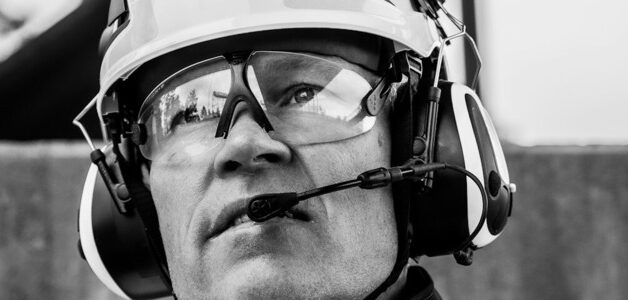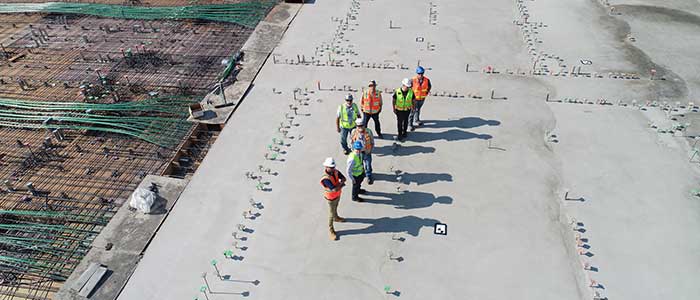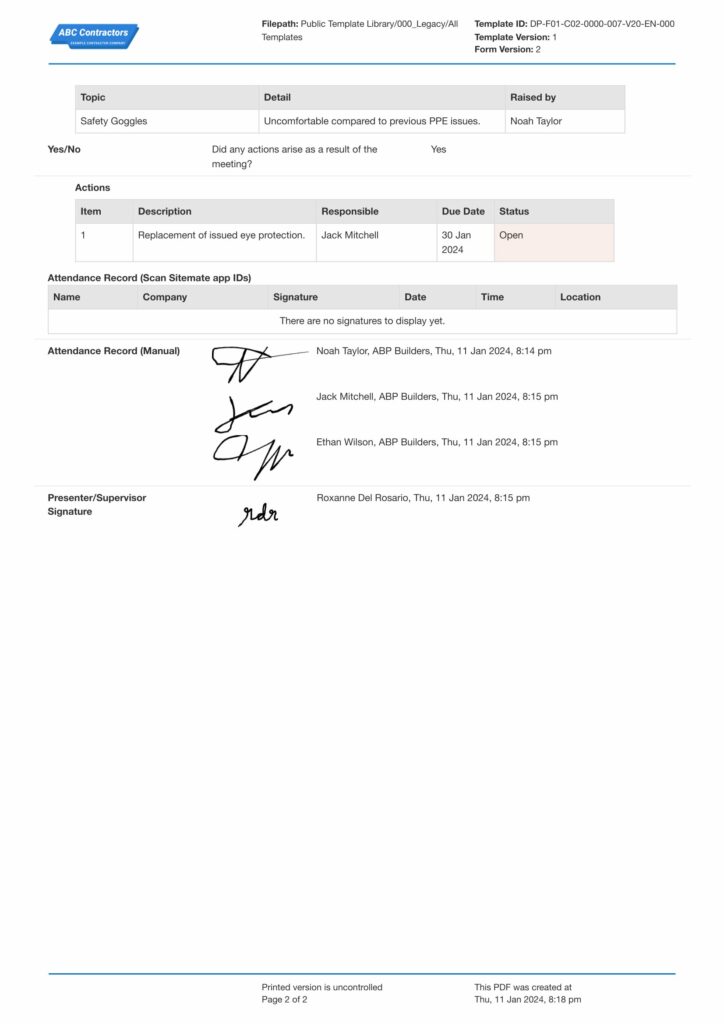Dashpivot Article – Eye Protection Safety
Eye Protection Safety
In this post, learn why eye protection safety is important in the workplace, and how you can improve eye protection safety across the board.

Eye Protection Safety: Tips on How to Do Eye Safety Right
Workplace eye injuries can result from various sources, and the severity of these may range from transitory discomfort to loss of permanent vision, which impacts the employee's life and work. Eye protection safety is not merely a compliance matter but a necessary element for workplace safety and health.
OSHA says 90% of eye injuries can be prevented by wearing the right eye protection, and employers have to make sure that eye protection is a priority.
Eye Hazards in the Workplace & How to Avoid Them
From one industry to another and from one job function to another, there is a wide range of potential eye dangers in the workplace. It is the responsibility of employers to identify any eye hazards in the workplace and supply workers with the necessary eye protection gear. Here are some hazards that may pose danger to the eyes:
Eye Protection Safety Against Small Objects or Particles
Small objects or particles, such as wood chips, metal filings, or dust, can enter the eye and cause damage if proper eye protection is not used. Employers should identify the hazards in their workplace and provide the right safety equipment for their employees. This way, employers can minimise eye injuries and improve the well-being of their workers.
Chemicals
Regular hazard assessments must be conducted by employers to identify the risks and implement control measures to protect their employees' vision. This may include the provision of eye protection, such as safety glasses or goggles; ensuring proper ventilation systems are in place to minimise exposure to harmful chemicals; and proper training on how to handle hazardous materials safely.
Radiation
Radiation from UV, infrared, or laser light sources can damage the eye over time, and employers must be aware of the risks of radiation exposure to UV, infrared, or laser light sources in the workplace. Radiation exposure risks can be reduced by providing measures such as adequate shielding of equipment, enforcing proper operating procedures, and regular maintenance and inspection. Educating employees on the risks of radiation exposure and strong safety protocols could protect an employer's workers' vision and health generally.
Biological Hazards
Biological hazards are primarily found in healthcare and laboratory environments, and companies in these sectors should also educate their workers on how to handle and dispose of hazardous materials safely and provide them with appropriate personal protective equipment such as gloves and masks. Routine air quality testing and rigorous cleaning practices can prevent the spread of diseases and infections in the workplace.
Strict safety measures, proper training for the workers regarding proper eye protection, and periodic inspection and changes in safety procedures may reduce the chance of eye injuries by many folds and maintain the workplace as safe for employees. It is also possible to prevent accidents and protect the eyes of workers from impairment through workplace risks with regular inspections and revisions in the safety procedure.
Types of Protective Eyewear: When & How to Use Them
Protective eyewear is a type of safety equipment that protects the eyes from flying debris or chemicals, and employers must be able to provide the right eyewear for the employees and make sure they are wearing it all the time. Each type of protective eyewear has a different purpose and needs to be selected according to the level of risk in the workplace. Here are the types of protective eyewear and how to use them properly:
Safety Glasses
Safety glasses provide an essential protection level from flying fragments and large-sized dust particles. Safety glasses also happen to be very light and are pretty comfortable to put on for extensive hours. Since these are supposed to be employed in workplaces where workers are frequently exposed to wood chips or similar debris and tiny fragments of broken metals, proper fit and occasional inspections for evidence of damage to safety glasses by employers are strictly necessary.
Goggles
Safety goggles have a snug fit and provide protection against dust, splashes, and even harmful vapours. More protective than safety glasses, goggles are recommended for tasks involving chemical handling or machinery where there is the flying of debris. Safety goggles ensure that there is a tight seal around the eyes with any particle or liquid not entering to lessen the chances of being injured. Regular maintenance and replacement of safety goggles are also equally important in the continued protection of individuals in a hazardous work environment.
Face Shields
Face shields are always used in tandem with safety glasses or goggles because they provide enhanced protection against splashes of chemicals or blood-borne pathogens. Welding shields come with full coverage of the entire face, specifically the eyes, nose, and mouth, and are used in high-hazard situations and environments. Clear, impact-resistant plastic makes up their face shields, which are easy to clean, sanitise, and maintain.
Wielding Shields
Welding shields are protective of radiation and sparks in welding activities, and the glasses used are dark and coloured to avoid letting the intense rays from the welding process enter. Employers may minimise eye injuries by having tough safety regulations, as well as equipping them with safety eye gear, ensuring a safe work environment.
Selecting Appropriate Other Eye Protection Safety Measures
Choosing the right eye protection equipment can prevent workplace accidents and boost employee satisfaction, and here are some tips for choosing the right eye protection:
Eye Protection Safety Risk Assessments
There needs to be an assessment of potential risks that establishes the nature and level of required protective eyewear. For example, in the welding environment, the use of appropriate shade lens helmets would keep eyes protected against UV rays as well as the sparks emitted while welding. This would add some protection by way of safety glasses with side shields against flying particles while welding.
Certification and Standards Compliance
Ensure that the eyewear complies with relevant standards, such as AS/NZS 1337 in Australia and New Zealand. For instance, safety glasses with certification or the ones that pass quality standards are recommended for industrial use to meet specific safety requirements. Always check for the right certification to ensure the eyewear provides the right protection for the work environment.
Comfort and Fit
The more comfortable and appropriate wearing eyewear is, the more frequently it will be used, and this is true, especially in hazardous workplaces where eye protection is necessary for constant wear. To ensure that the glasses feel good on the employee's face, opt for safety glasses with adjustable features such as nose pads and temples. When wearing their eyewear, employees will be comforted; employees are more likely to do their jobs safely and avoid eye injuries.
Compatibility
Ensure that eye protection is compatible with other PPE - for instance, safety glasses with a sleek design that can fit under a hard hat or welding helmet would be perfect for construction workers and construction worker eye protection. This way, all PPE can be worn at the same time and maximise protection in high-risk environments.
How to Do Eye Protection Safety Right
Provide training on how to use and care for eye protection, and here are some steps to follow to implement eye safety in the workplace:
Maintenance
Employers must schedule maintenance, cleaning, and inspection of eye protection equipment at all times to ensure they are in mint condition.
Emergency Response
You’ll never know when eye injuries take place, so it’s great to have a process for responding to eye injuries in the workplace. Having first aid training and knowing what to send to medical. A defined process for eye injuries reduces damage and gets you the right care as quickly as possible.
Regular Safety Meetings
Always run toolbox talks about eye protection before new jobs that require eye protection or after an incident or near miss on site. In these safety meetings, review the use of eye protection equipment, and remind employees to wear it at all times, and remind them of the risks of not wearing eye protection to reinforce this safety measure.
Leadership & Employee Involvement
Management must impose a culture of safety, and employees must participate in safety meetings and give input on eye protection PPE in toolbox talks. By getting all employees involved in the safety procedures and discussions, the whole organisation can work together to reduce accidents.
Regular Audits
Regular audits will ensure employees have the required PPE and safety procedures are being followed. Gaps in safety are identified, and opportunities for improvement are found, and being proactive and responsive to employee concerns, organisations can have a safety culture that puts employees first.
Use toolbox talks to educate and reinforce eye protection safety
Enforcing eye safety has never been easier with Dashpivot. Here is an example of how eye protection is included in Toolbox Talks:

Use this Toolbox Talk on Eye Protection for free
Go Digital with Eye Protection Safety
Toolbox talks are part of workplace safety, including eye protection safety, and this digital eye protection toolbox talk template makes it easy to create toolbox talks for eye protection safety. The template has fields to capture talking points on eye hazards, required PPE, and a section to record team feedback and attendance. You can also export toolbox talks as CSV or PDF so your team can access safety info in just a few clicks.

Heat Stress Toolbox Talk template
Avoid heat stress incidents with PPE, prevention and identify symptoms using this Toolbox Talk Heat Stress template.

Safety Toolbox Talk template
This toolbox talk template is quick and easy to complete and signoff on site, and keeps all of your toolbox talks neatly organised and professional.

Toolbox Talk Noise Pollution template
Keep your team aware of noise pollution, ways to manage risks and reduce noise with this Toolbox Talk template.

